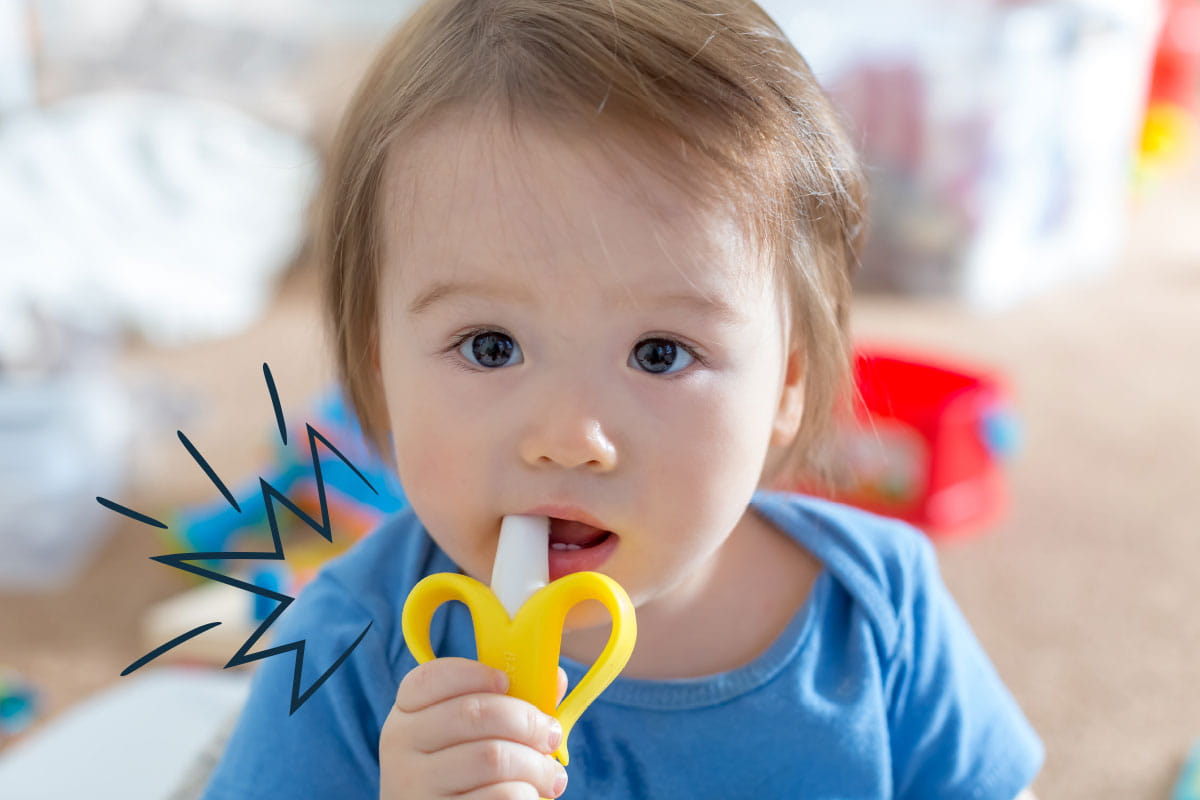How to Curb Biting Behaviors

Kids use behavior as a form of communication. We may not always understand what they’re trying to tell us, but it always has meaning. When your 2-year-old bites your 4-year-old, she may be trying to communicate, “I want the toy you have, and I’d like it right now.” As soon as she bites her brother, he drops the toy, and it’s all hers. Bingo!
While biting may not be the best way to communicate their needs, it sure is effective! But there are definitely healthier and more desirable alternatives. All they need is a little help from you on modeling the right behavior. Here are some things to keep in mind if you have a burgeoning biter on your hands.
Methods to curb biting behaviors
The good news is this is just a phase and a very common behavior for toddlers. Children bite for many reasons, such as being unable to communicate their wants and feelings, oral sensory exploration, mimicking other children, or simply teething. Take time to observe when and why your child might be biting. The Notes app in your phone is an easy way to make a quick note about when and what was happening when the bite occurred.
Once you think you’ve found the source of your child’s behavior, here are some methods for replacing the action with healthy practices.
The knotted bandana redirect
Keep a few bandanas handy. Let your child choose the color they want each morning and double knot it in the middle. Then tie the knotted bandana around their wrist. Tell your child that biting the knot on their wrist is OK. Let them practice biting the knot throughout the day.
When your child bites someone else (or if a bite can be intercepted), remind your child that we don’t bite people. Instead, redirect them to bite their knot. Be sure to move them away from the child or adult they’ve bitten.
Refrain from talking about biting when a bite occurs. Save that conversation for later. You don't want to reinforce biting by giving it lots of attention. Instead, direct your attention to the person who was bitten. If possible, have your child help offer them comfort. Later, reconnect with your child and suggest alternatives to biting. Coach them on using their words to communicate with others instead of using their actions. When communicating their needs, they should use the words "no," "stop," or "that's mine" instead of biting.
Build emotional literacy
Many times, biting happens because a child is frustrated, angry, or sad and unable to express what they’re feeling. Instances like these can be pivoted to learning moments that will help your child build emotional literacy.
When a biting occurrence happens, ask your child if they can identify which emotion they’re feeling when they bit. Once you both can identify the emotion, help them put words to it that correlate the emotional cause to their action. For example: “You were feeling frustrated because you weren’t ready to clean up.”
Books can also be a good tool to reinforce a desirable way to deal with their big emotions. Here are a couple books we recommend on the topic that show what children can do instead of biting. (You can also find read-alouds of these books on YouTube!)
- “Teeth Are Not for Biting” by Elizabeth Verdick
- “No Biting!” by Karen Katz (Check out this free activity guide based on the book!)
Biting for oral sensory exploration
Sometimes children bite because they’re exploring new textures. You can support this in a healthy way by providing opportunities for them to safely explore different foods and sensory toys. Here are some ideas, but please note that not all these options are for exploring with their mouths. The idea is to redirect their sensory exploration to healthy observations using all their senses!
- Offer foods that are varied in texture.
- Play with playdough or putty.
- Create sensory bags. Just use any size Ziplock bag filled with paint, hair gel, soap, or anything children can squish and manipulate. Be sure to double bag and tape it closed with packing tape for an extra precaution.
- Create sensory bins. Fill a large plastic container fill with a small amount of soapy water, sand, or oatmeal. Add their favorite toys or use measuring cups for them to scoop and play.
Sometimes it’s hard to learn new ways of communicating but with your patience, encouragement, and lots of opportunities to practice, your child will learn to understand their feelings and express them in a safe and appropriate way that involves less ice packs. Remember, this too shall pass.





